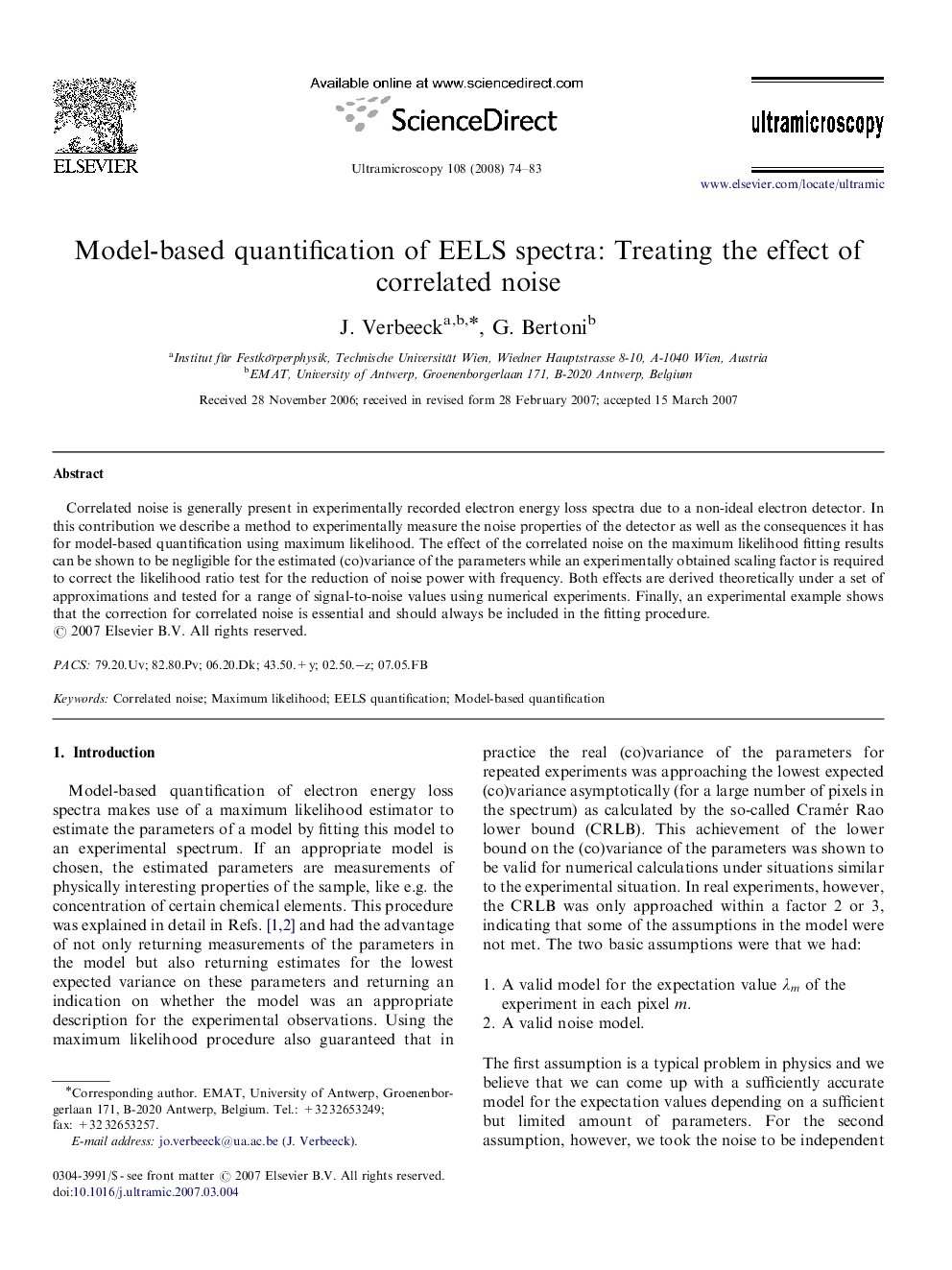| Article ID | Journal | Published Year | Pages | File Type |
|---|---|---|---|---|
| 1678535 | Ultramicroscopy | 2008 | 10 Pages |
Correlated noise is generally present in experimentally recorded electron energy loss spectra due to a non-ideal electron detector. In this contribution we describe a method to experimentally measure the noise properties of the detector as well as the consequences it has for model-based quantification using maximum likelihood. The effect of the correlated noise on the maximum likelihood fitting results can be shown to be negligible for the estimated (co)variance of the parameters while an experimentally obtained scaling factor is required to correct the likelihood ratio test for the reduction of noise power with frequency. Both effects are derived theoretically under a set of approximations and tested for a range of signal-to-noise values using numerical experiments. Finally, an experimental example shows that the correction for correlated noise is essential and should always be included in the fitting procedure.
